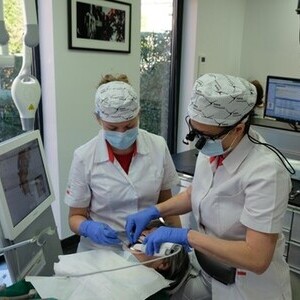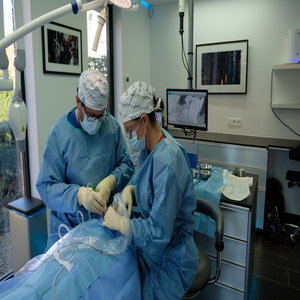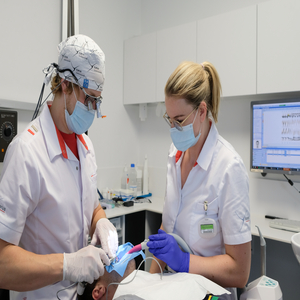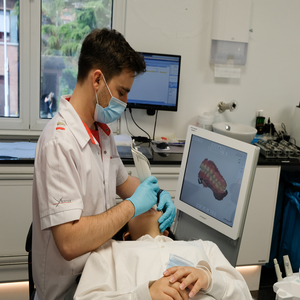Esthetic facings and porcelain restorations (onlays)
The (biologically) least invasive way to repair a tooth that is either worn down or damaged is by using porcelain facings and onlays. Classic crowns are rarely used for this anymore. By means of a photo shoot in our photo studio an analysis is made of the patient’s natural smile. DSD, Digital Smile Design, allows us to design a new smile that looks both natural and appealing. Obviously we also take the patient’s expectations into consideration. All the acquired information is then transferred to models, upon which the dental technician crafts the new mould tooth by tooth. This is called a mock-up and it allows us to ‘test’ the design in the mouth so we can see what the end result will look like. The teeth are then minimally biologically shaved under a microscope and a magnifying glass before a final print is made. Now the dental technician can start with the artistic work. The wafer-thin porcelain facings and onlays (laminate veneers) are made by hand individually, and layered with porcelain. These are then fitted in the mouth and microscopically inserted. The porcelain restorations are done in such a way that they result in an enhancement that is both predictable and reliable. We also want the restoration to be long-lasting, without any discolouration.
Make an appointment
Restoration extreme wear and tear
Operator: Dr Marco Gresnigt


This patient has a lot of enamel loss due to extreme wear and tear.


With a mock-up and moulds a tray-out is made in the mouth.


New pictures allow us to evaluate the new smile.




Final facings are microscopically placed under rubber dam isolation


The facings are very natural in the mouth.


Patient is pleased with his/her new smile.







Other services







